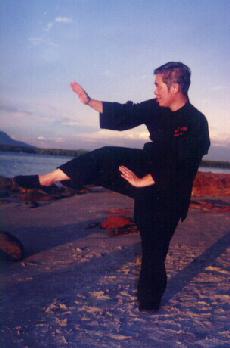MARTIAL ARTS AND MARTIAL SPORTS

Shaolin Kungfu
Question
Whilst I fully understand that the deepest teachings of any TRUE martial art are essentially all the same, I desperately seek guidance on the issues I have raised previously.
-- Chris, UK
Answer
You are much mistaken. Martial arts differ from one another greatly in many aspects — in history, philosophy, form, structure, methods, approaches and aspirations.
While there is no doubt that genuine Shaolin Kungfu and Taijiquan (as distinct from modernized wushu and Taiji dance) as well as Jujitsu are true martial arts, there is some debate whether Karate, Taekwondo and Muai Thai are martial arts or martial sports. On the other hand, Judo, Aikido, Western Boxing and Wrestling are certainly martial sports and not true martial arts!
What essentially differentiates a martial art from a martial sport? A martial art is meant for real fighting and not for sport, whereas a martial sport is meant for sport and not for real fighting.
Aren't Karate, Taekwondo and Muai Thai meant for real fighting? No! Although exponents of these arts can use them for real fighting, they are actually meant for sport. That is why there are many safety rules. You cannot, for example, choke your opponent in Karate sparring, or hold the leg of a Taekwondo exponent, or kick the groin of a Muai Thai fighter. You are not allowed to do so. But in real fighting there are no safety rules.
Judo, Aikido, Western Boxing and Wrestling are sports. If you use Judo or Aikido against a seasoned street fighter, you could be killed or maimed in less than five minutes. When a Judo expert grips your collar for a throw, or an Aikido expert manoeuvres you for a lock, poke two fingers into his eyes or jerk your knee hard into his groin. Then when he grimaces in pain, thrust your knuckles into his throat. You may not do any of these drastic things, but a street fighter would.
A properly trained exponent of a true martial art like Jujitsu, Shaolin Kungfu and Taijiquan will never rush in to attack you with total disregard for his own safety. Amazingly this is exactly what many martial sportsmen do.
Taekwondo exponents often expose their vulnerable sexual organs glaringly in high kicks. A seasoned street fighter would side-step then move in to give the exposed sexual organs a hard punch. If a wrestling sportsman goes low to grab the legs of a seasoned street fighter, he would strike down his elbow at the sportsman's head. If a Muai Thai sportsman holds on to the street fighter's neck and throw knee attacks onto the latter, he would grip the sportsman's testicles and squeeze really hard.
But let us, for the sake of academic discussion, forget about sport and real fighting, and regard these arts as martial arts, as we often do. In form or content, Judo is characteristically different from Taekwondo, and Taekwondo different from Taijiquan. In methods and aspirations, Aikido is characteristically different from Muai Thai, and Muai Thai different from Shaolin Kungfu. In Karate and Taekwondo, the guiding principle in combat is to attack at all cost; in Aikido an exponent often does not know what to do if the opponent does not attack. In Muai Thai, exponents sacrifice their health in harsh training methods so that they could win in competitions, whereas Taijiquan training enhances the exponents' health, and losing a combat does not matter so long as they emerge unhurt.
The above is taken from Question 6 of Oct 2001 Part 1 of the Selection of Questions and Answers.
LINKS
Courses and Classes
